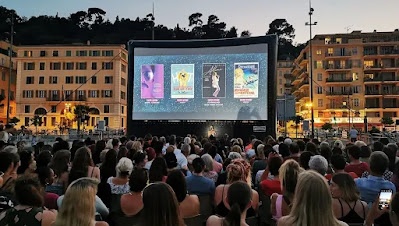With more and more North Americans coming to the region
(including the LGBTQ community) either for a vacation, retirement,
secondary home investment, or even a forever home. I thought it was
important to give some background as to why that continues to this day.
For more than a century, the French Riviera—la Côte d’Azur—has
seduced Americans with its blend of Mediterranean charm, sun-soaked
leisure, and artistic spirit. From bohemian writers in the 1920s to
modern retirees and tech nomads, Americans have woven themselves into
the cultural and social tapestry of this legendary coastline. Here's a
look at how that relationship has evolved over the decades.
The 1920s: The Lost Generation Finds the Riviera
The
earliest wave of American migration to the French Riviera began in
earnest during the 1920s, when a cohort of disillusioned, ambitious
writers and artists fled Prohibition-era America and found refuge in
France. Chief among them were members of the so-called “Lost
Generation”: Ernest Hemingway, F. Scott Fitzgerald, and Gertrude Stein.
Drawn to the Riviera for its beauty and its freedoms, these expatriates
made towns like Antibes, Cannes and Nice their creative sanctuaries.
Fitzgerald, in particular, immortalized the region in his novel Tender Is the Night,
depicting the glittering but decaying lives of Americans abroad. The
Côte d’Azur became a place for introspection and excess, a land where
art mingled with jazz, gin, and Mediterranean light.
The 1940s–1950s: Postwar Glamour and the Hollywood Invasion
World
War II temporarily dimmed the Riviera’s luster, but the postwar years
brought a resurgence—this time with a Hollywood flair. The 1950s saw
American movie stars such as Grace Kelly, Cary Grant, and Elizabeth
Taylor flock to the region, helped in part by the rising glamour of the
Cannes Film Festival. Grace Kelly’s marriage to Prince Rainier III of
Monaco in 1956 cemented the connection between the French Riviera and
American fantasy.
Simultaneously, American writers like James
Baldwin found in the Riviera a quieter, more contemplative retreat.
Baldwin lived for years in Saint-Paul-de-Vence, a hilltop village where
he wrote and socialized with fellow artists, far from the racial
tensions and constraints of the United States.
The 1960s–1980s: Counterculture, Wealth, and the Global Jet Set
The
1960s ushered in a new kind of American presence: the counter-cultural
traveler. Hippies and beatniks arrived in droves, drawn to the Riviera’s
artistic reputation and relaxed lifestyle. While Paris remained the
intellectual capital, the South of France offered sunshine, sea, and a
sense of bohemian freedom.
By the 1970s and 1980s, however, a
different class of American began arriving: entrepreneurs, bankers, and
heirs, part of the global jet set. Towns like Saint-Tropez transformed
from quiet fishing villages into luxurious playgrounds. Americans
invested in property, opened restaurants and clubs, and became part of
the Riviera's wealthy elite.
The 1990s–2000s: Second Homes and Globalization
As
globalization took hold, the Riviera became increasingly accessible.
More direct flights, international business networks, and the rise of
real estate investment drew another wave of Americans—this time not as
wanderers or artists, but as vacation-home owners and retirees. From
Saint Tropez to Menton, American retirees and professionals purchased
villas, often using them as seasonal retreats.
Though integration
into local culture varied, many Americans contributed to the region’s
cosmopolitan vibe, bringing with them ideas about wellness,
entrepreneurship, and international living.
The 2010s–Present: Tech Nomads and the Remote Work Boom
In
the last decade, the profile of Americans moving to the French Riviera
has shifted again. Fueled by the rise of remote work (with the
appropriate paperwork in place) and the appeal of a slower-paced
Mediterranean lifestyle, a younger generation of Tech nomads and
freelancers is settling in cities like Nice and small towns along the
coastline. Social media has added to the region’s allure, promoting a
curated, sun-drenched vision of Riviera life that continues to enchant.
At
the same time, longstanding American enclaves—expat groups,
English-speaking bookstores, international schools—remain vital parts of
the local ecosystem.
A Cultural Dialogue Across the Sea
Today,
Americans on the French Riviera represent a rich blend of history,
ambition, and adaptation. From writers and celebrities to retirees and
remote workers, they’ve each brought something uniquely American while
also absorbing the art de vivre of southern France.
The Riviera
continues to enchant not just as a destination, but as a kind of
mirror—reflecting back American dreams through the prism of breathtaking
landscapes, café terraces, and endless blue horizons over the
Mediterranean Sea
If you are considering coming this way, connect with us today.



















































